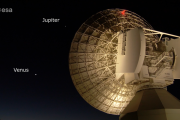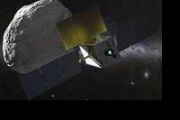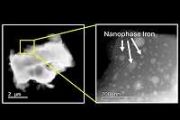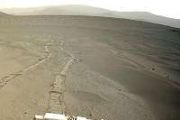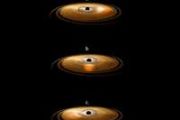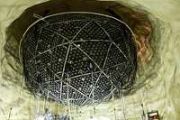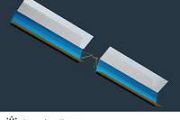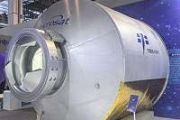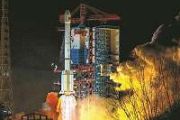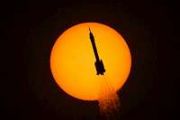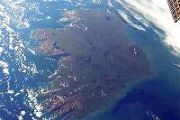
Copernical Team
Experimental satellite enters orbit aboard Long March 4C from Sichuan
 China successfully deployed an experimental satellite into orbit on Thursday afternoon, using a Long March 4C rocket launched from the Xichang Satellite Launch Center in Sichuan province. The launch occurred at 5:35 pm local time, according to China Aerospace Science and Technology Corp. (CASC).
The satellite, designated Shiyan 28B01, was developed by the Innovation Academy for Microsatell
China successfully deployed an experimental satellite into orbit on Thursday afternoon, using a Long March 4C rocket launched from the Xichang Satellite Launch Center in Sichuan province. The launch occurred at 5:35 pm local time, according to China Aerospace Science and Technology Corp. (CASC).
The satellite, designated Shiyan 28B01, was developed by the Innovation Academy for Microsatell Atomic 6 receives 2M Space Force award to advance next generation solar arrays
 Atomic-6 has secured a $2 million Tactical Funding Increase (TACFI) from the U.S. Space Force's Space Systems Command to accelerate development of its Light Wing solar array. The award supports a 21-month effort to mature and qualify the technology for commercial and defense missions.
The all-composite Light Wing array offers more than four times the power-per-kilogram of current systems,
Atomic-6 has secured a $2 million Tactical Funding Increase (TACFI) from the U.S. Space Force's Space Systems Command to accelerate development of its Light Wing solar array. The award supports a 21-month effort to mature and qualify the technology for commercial and defense missions.
The all-composite Light Wing array offers more than four times the power-per-kilogram of current systems, Clingy exoplanet may be triggering destructive stellar flares
 Astronomers using ESA's Cheops mission have observed a young exoplanet seemingly causing powerful flares from its host star-flares so intense they are rapidly stripping away the planet's delicate atmosphere.
The planet, HIP 67522 b, orbits its star in just seven days and is bombarded by radiation due to frequent energetic outbursts. These flares, nearly 100 times more energetic than predic
Astronomers using ESA's Cheops mission have observed a young exoplanet seemingly causing powerful flares from its host star-flares so intense they are rapidly stripping away the planet's delicate atmosphere.
The planet, HIP 67522 b, orbits its star in just seven days and is bombarded by radiation due to frequent energetic outbursts. These flares, nearly 100 times more energetic than predic Robots could one day crawl across the moon
 The future of moon exploration may be rolling around a non-descript office on the CU Boulder campus.
Here, a robot about as wide as a large pizza scoots forward on three wheels. It uses an arm with a claw at one end to pick up a plastic block from the floor, then set it back down.
To be sure, this windowless office, complete with gray carpeting, is nothing like the moon. And the robo
The future of moon exploration may be rolling around a non-descript office on the CU Boulder campus.
Here, a robot about as wide as a large pizza scoots forward on three wheels. It uses an arm with a claw at one end to pick up a plastic block from the floor, then set it back down.
To be sure, this windowless office, complete with gray carpeting, is nothing like the moon. And the robo China prepares for Mars sample return with HKU astrobiologist on mission team
 China has formally initiated its Tianwen-3 Mars Sample Return (MSR) mission, targeting a 2028 launch to collect and return Martian soil and rock for detailed study. Among the key contributors is Professor Yiliang LI, an astrobiologist at The University of Hong Kong (HKU), who leads a team focused on selecting a scientifically valuable landing site.
As a core member of the Tianwen-3 science
China has formally initiated its Tianwen-3 Mars Sample Return (MSR) mission, targeting a 2028 launch to collect and return Martian soil and rock for detailed study. Among the key contributors is Professor Yiliang LI, an astrobiologist at The University of Hong Kong (HKU), who leads a team focused on selecting a scientifically valuable landing site.
As a core member of the Tianwen-3 science Closing the loop: new Space Rider drop test

Artificial solar eclipses in space could reveal inner workings of the sun
This request seems a bit unusual, so we need to confirm that you're human. Please press and hold the button until it turns completely green. Thank you for your cooperation!
Press and hold the button
If you believe this is an error, please contact our support team.
185.132.36.159 : 0de287ea-a971-41df-b6f0-10b03d40
Probing the cosmic 'Dark Ages' from the far side of the moon
This request seems a bit unusual, so we need to confirm that you're human. Please press and hold the button until it turns completely green. Thank you for your cooperation!
Press and hold the button
If you believe this is an error, please contact our support team.
185.132.36.159 : be1a876c-c0fa-4f2c-b96c-afae2e68
An astronaut called a satellite 'impossible'
This request seems a bit unusual, so we need to confirm that you're human. Please press and hold the button until it turns completely green. Thank you for your cooperation!
Press and hold the button
If you believe this is an error, please contact our support team.
185.132.36.159 : 4aca0de9-917c-468f-a96a-5e910ed6
Satellite observations provide insight into post-wildfire forest recovery
 Satellite imagery of Southern Oregon and Northern California forests. NSF NCAR scientists used satellite imagery to evaluate the percentage of forest regrowth post-wildfire across different land conservation categories. (Image courtesy Shima Shams.)
Impact Statement: Satellite observations may be an efficient, cost-effective way for land managers to evaluate forest recovery after wildfires
Satellite imagery of Southern Oregon and Northern California forests. NSF NCAR scientists used satellite imagery to evaluate the percentage of forest regrowth post-wildfire across different land conservation categories. (Image courtesy Shima Shams.)
Impact Statement: Satellite observations may be an efficient, cost-effective way for land managers to evaluate forest recovery after wildfires 







